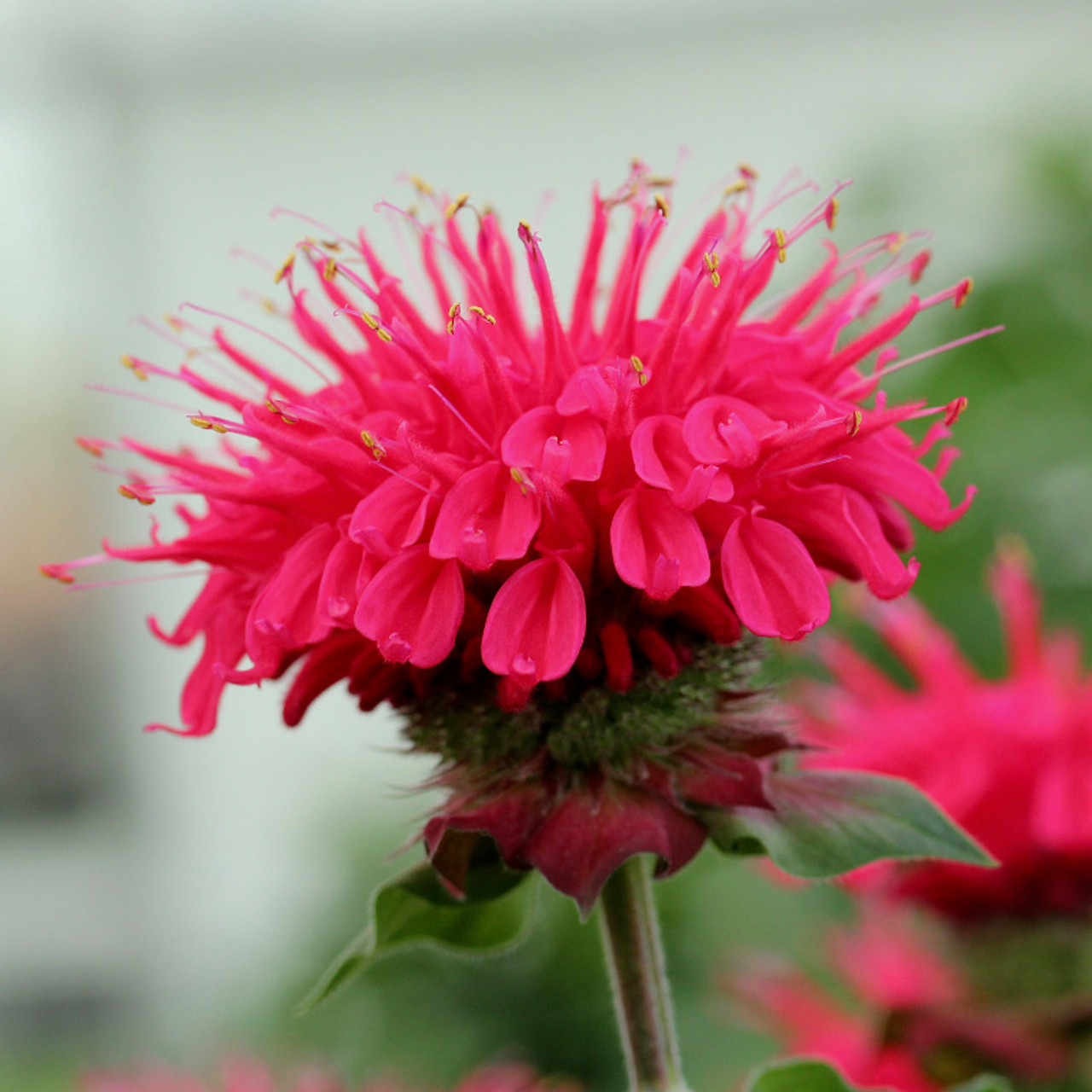
Bee Balm
Bee Balm, often called monarda, is a native flowering perennial that blooms from summer to fall and has fragrant foliage all growing season. The plants are very beneficial to wildlife including bees, butterflies, & birds.
About Bee Balm

Beebalm, Bee Balm, Bee-balm, Bergamont, Bergamot, Crimson Bee-balm, Horsemint, Oswego Tea, Scarlet Bee Balm
North America
Perennial
Deciduous
3-9
Red, Pink, Purple
Summer
Clump
Butterflies, Hummingbirds, Moths, Pollinators, Bees
Summer
Black Walnut, Deer, Insect Pests, Rabbits, Wet Soil
Types of Bee Balm
| Type | Scientific Name | Color | Height | Features |
|---|---|---|---|---|
| Scarlet Bee Balm | Monarda didyma | Red | 2–4 feet | Attracts hummingbirds; mildew-resistant varieties. |
| Wild Bergamot | Monarda fistulosa | Lavender to pink | 3–4 feet | Drought-tolerant; popular with bees and butterflies. |
| Lemon Bee Balm | Monarda citriodora | Purple to pink | 1–2 feet | Citrus-scented leaves; ideal for herbal teas. |
| Spotted Bee Balm | Monarda punctata | Pale yellow/purple | 1–3 feet | Unique layered flowers; thrives in sandy soils. |
How To Use Bee Balm In The Garden
Bee Balm is a magnet for pollinators, thanks to its tubular flowers that attract bees, butterflies, and hummingbirds. With varieties in shades of red, pink, purple, and white, it offers fantastic color throughout summer. Known for its ability to tolerate a range of soil types and moisture levels, Bee Balm is a hardy perennial that adapts well to different climates. Its slightly minty scent adds another layer of interest to this multifaceted plant.
This herbaceous perennial works well in borders, meadow plantings, or alongside vegetable gardens, where it can attract beneficial insects. Tall varieties create striking backdrops, while dwarf forms suit smaller spaces or container gardening. As a member of the mint family, Bee Balm can spread, making it ideal for naturalizing areas or filling in bare spots. Its dual role as an ornamental and functional plant ensures it shines in diverse planting schemes.
Bee Balm Care
Bee balm grows best in well-draining soil enriched with organic matter, with a slightly acidic to neutral pH. Plant it in a location with full sun, as this encourages strong growth and optimal flowering. Consistent watering is essential, especially during dry periods, but avoid soggy conditions to prevent root rot. Applying a balanced, slow-release fertilizer in early spring supports root development and blooming. Mulching around the base helps retain moisture and regulate soil temperature.
Pruning helps maintain the plant’s shape and promotes continuous blooming. Deadhead spent flowers to encourage new growth throughout the season. In early spring, cut back the faded stems to prepare for new growth. Bee balm can overwinter outdoors in most climates, but a layer of mulch offers added protection in colder regions. When grown in containers, use a well-draining potting mix and water frequently, as pots dry out faster than garden beds.
Learn More About Bee Balm Care

Bee Balm Companion Plants
Plants that go well with bee balm are sun loving annuals, perennials and shrubs that pollinators love. Some of our favorite plants to grow with bee balm are phlox, roses, coneflowers, daylilies, and also pairs well with ornamental grasses. It is also frequently grown in vegetable gardens because the foliage can help keep several common pests away.




































